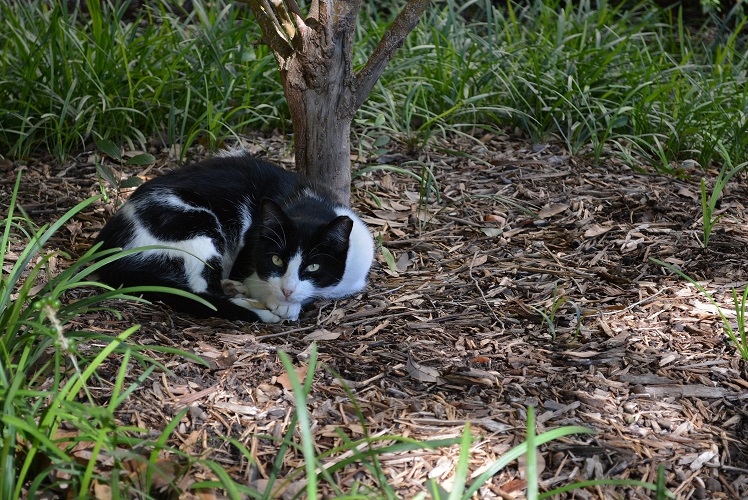About the Feral Cat Group at SMU
 The Feral Cat Group at SMU was created in December 2004 to manage the homeless cats living on the SMU campus, most of which are feral. (It’s important to distinguish between feral cats and strays. Strays are domesticated cats who have lost their way, but respond to humans; ferals are not domesticated and usually avoid getting too close to humans. The program works to place those that are not feral in homes.)
The Feral Cat Group at SMU was created in December 2004 to manage the homeless cats living on the SMU campus, most of which are feral. (It’s important to distinguish between feral cats and strays. Strays are domesticated cats who have lost their way, but respond to humans; ferals are not domesticated and usually avoid getting too close to humans. The program works to place those that are not feral in homes.)
Our volunteers consist of students, faculty, staff, alumni, and community members who monitor, evaluate, and provide humane care for the campus cats. SMU joins universities across the country in using the veterinarian-approved TNR system (trap-neuter-return) for managing the cat population. About 50 feral cats live on the SMU campus and university property.
Facts about the campus cats:
- The SMU program currently manages approximately 50 feral cats campus-wide.
- We have about a 95 percent spay/neuter/vaccination rate, and our efforts are continuous. Our goal is to spay/neuter every cat on campus.
- In the past 10 years, the number of cats on campus has dropped by almost 50 percent.
- We are supported by the Office of the President, the Summerlee Foundation and individual donations.
How does a managed feral cat colony work?
- Feed ‒ Six nights a week year-round (currently, we feed once over the weekend), volunteers provide enough food for the cats to maintain good health; this also discourages foraging in trash containers, random and inconsistent feeding by kindly strangers, and hunting for prey such as birds or squirrels (although the cats are welcome to prey on rats and mice!). Volunteers also provide clean water.
- Monitor ‒ Volunteers become familiar with the cat population and are alert to anomalies among the cats they see. For example, outside cats do sometimes infiltrate the population and attach themselves to a colony. It is crucial to take notice in the rare instance when an unspayed female becomes pregnant.
- Trap ‒ Trained team members humanely trap the cats for TNR. Program traps have identification labels.
- Neuter ‒ Trapped cats are taken to a veterinarian, currently Mercy Animal Clinic, where they are spayed or neutered. Their left ear is “tipped” (has the point cut flat**) so people will recognize that the cat has been seen by a vet, received a rabies vaccination, and been sterilized. Our cats also are tested for disease.
- Return ‒ The cats are returned to their colony where they may live out their lives without contributing to the overpopulation of homeless cats.
What are the alternatives?
- Do nothing ‒ Uncontrolled breeding will quickly create an unmanageable population.
- Trap and kill ‒ Aside from being inhumane and illegal, this approach is not a solution. In a campus environment, more cats, neither spayed nor neutered, can be expected to move in to fill the void and start the cycle over again. This has also proved to be a public relations disaster for schools that have tried it.
- Find homes for the cats ‒ The Feral Cat Group does find homes for any cats who are socialized enough to live with people. But for most campus cats, this approach is not realistic. Feral adults cannot be socialized to the point where they are able to live in homes as pets, and local animal shelters and adoption facilities do not take ferals. That said, the campus cats exhibit a continuum of socialized behavior, ranging from felines that allow touch to those that actively hide from humans.
- Relocation ‒ There is no place for them to go, cats are difficult-to-impossible to relocate successfully, and if you remove them, you can expect unsterilized, unvaccinated cats to take their place.
* A “colony” may consist of any number of cats from 1 to 6 or more, who spend most of their time in a particular area. Some cats never leave their area, while a few like to roam.
**This is a general practice among feral cat management groups. It doesn’t hurt the cats and prevents their being trapped mistakenly for TNR.